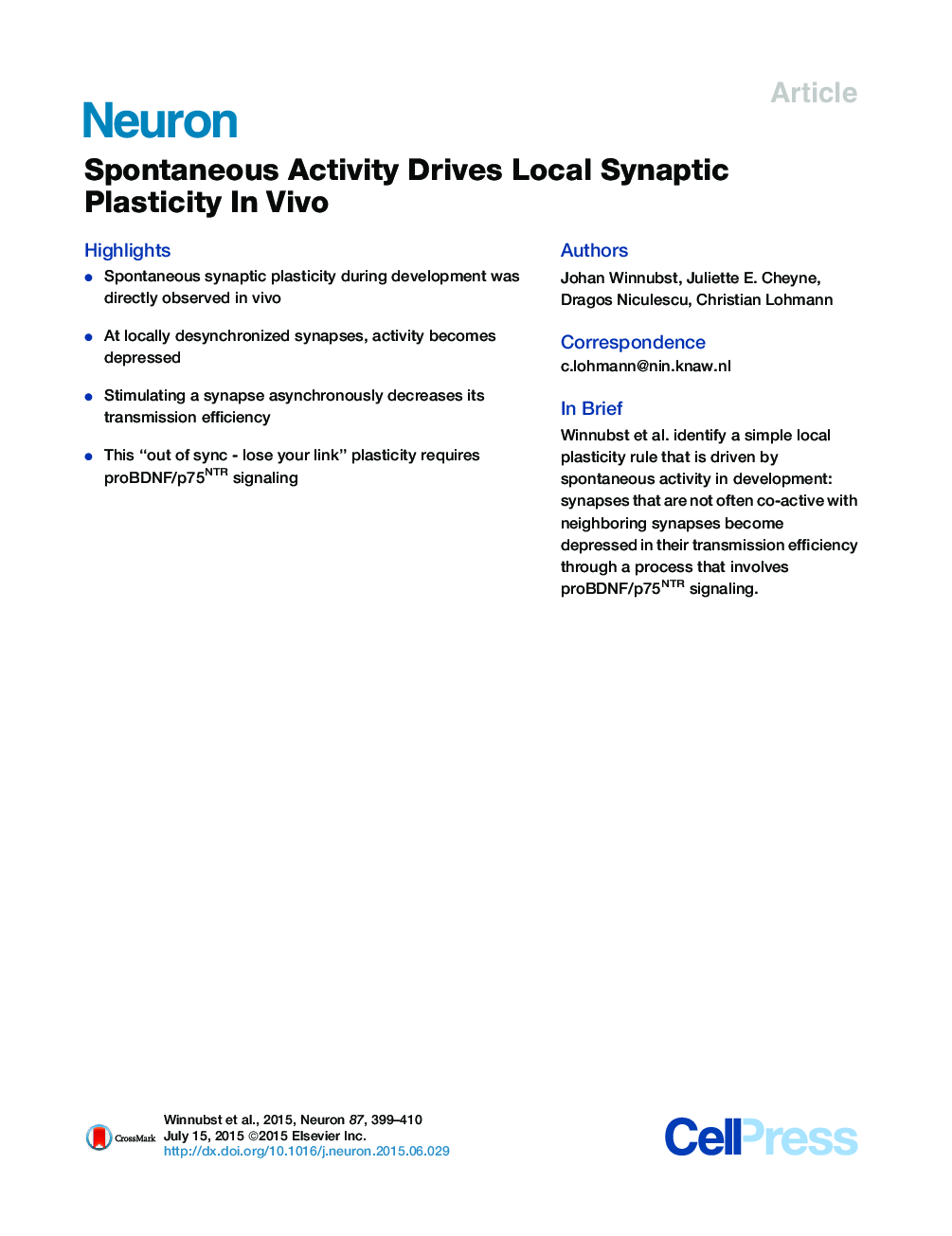| Article ID | Journal | Published Year | Pages | File Type |
|---|---|---|---|---|
| 4320914 | Neuron | 2015 | 12 Pages |
•Spontaneous synaptic plasticity during development was directly observed in vivo•At locally desynchronized synapses, activity becomes depressed•Stimulating a synapse asynchronously decreases its transmission efficiency•This “out of sync - lose your link” plasticity requires proBDNF/p75NTR signaling
SummarySpontaneous activity fine-tunes neuronal connections in the developing brain. To explore the underlying synaptic plasticity mechanisms, we monitored naturally occurring changes in spontaneous activity at individual synapses with whole-cell patch-clamp recordings and simultaneous calcium imaging in the mouse visual cortex in vivo. Analyzing activity changes across large populations of synapses revealed a simple and efficient local plasticity rule: synapses that exhibit low synchronicity with nearby neighbors (<12 μm) become depressed in their transmission frequency. Asynchronous electrical stimulation of individual synapses in hippocampal slices showed that this is due to a decrease in synaptic transmission efficiency. Accordingly, experimentally increasing local synchronicity, by stimulating synapses in response to spontaneous activity at neighboring synapses, stabilized synaptic transmission. Finally, blockade of the high-affinity proBDNF receptor p75NTR prevented the depression of asynchronously stimulated synapses. Thus, spontaneous activity drives local synaptic plasticity at individual synapses in an “out-of-sync, lose-your-link” fashion through proBDNF/p75NTR signaling to refine neuronal connectivity.Video Abstract To view the video inline, enable JavaScript on your browser. However, you can download and view the video by clicking on the icon belowHelp with MP4 filesOptionsDownload video (42276 K)
